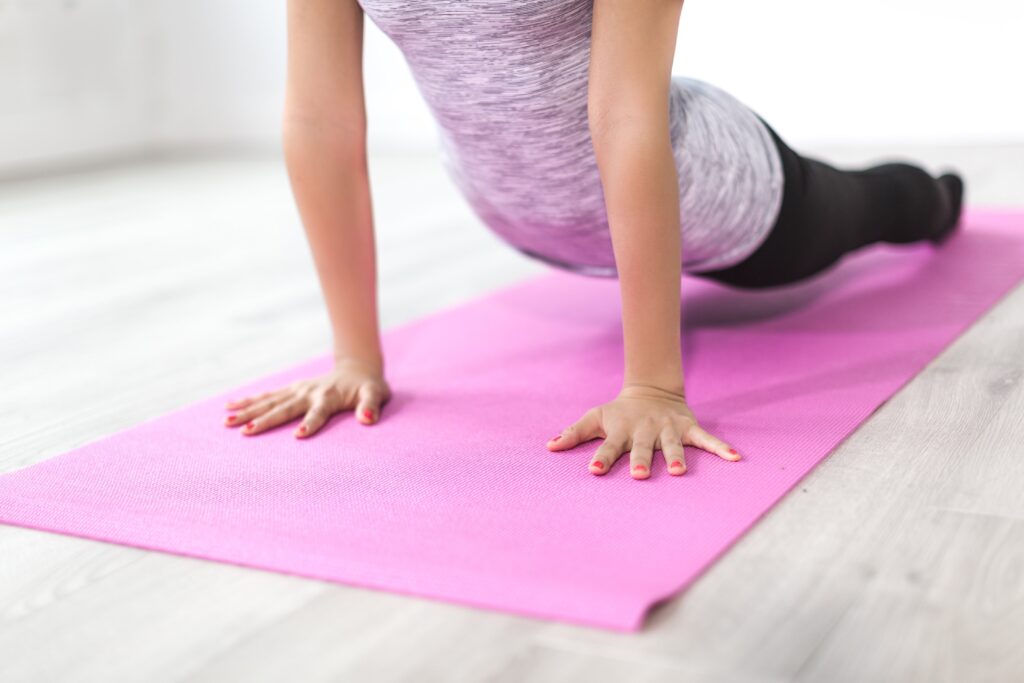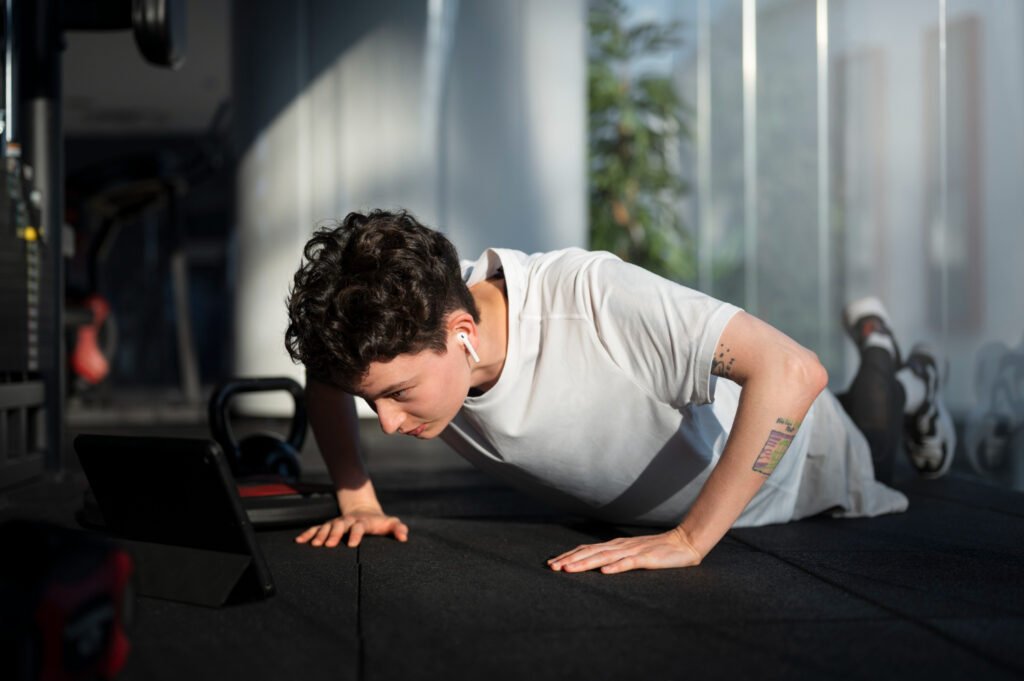
Table of Contents
Overview
A strong core is the foundation of overall fitness and essential for more than just aesthetic appeal. It plays a vital role in stabilizing the body, enhancing athletic performance, and supporting daily activities. A well-developed core can also prevent injuries, alleviate lower back pain, and improve posture. This comprehensive guide will walk you through the best ab exercises to strengthen your core, as well as tips for effective core training, the benefits of a strong core, and ways to incorporate these exercises into your routine.
The Role of Core Muscles in Physical Health
The core is composed of several muscle groups, including:
- Rectus Abdominis: Commonly referred to as the “six-pack,” this muscle runs vertically along the front of the abdomen.
- Obliques (Internal and External): These muscles run along the sides of the waist and are responsible for rotation and lateral movements.
- Transverse Abdominis: Located underneath the obliques, this muscle wraps around the spine, providing stability.
- Erector Spinae: A group of muscles running along the spine that help with posture and back extension.
Strengthening these muscles helps stabilize the spine and pelvis, reducing the risk of injuries during physical activities and improving balance and functional movements in daily life. Core training is also crucial for athletes, as it enhances overall performance in sports that require sudden changes in direction, strength, or endurance
Related : 10 Ways to Fight Sugar Cravings
Best Ab Exercises for Core Workout
Incorporating a mix of exercises targeting different parts of the core ensures a balanced workout. Here are the most effective ab exercises you should include in your routine for a strong and stable core.
- Plank Variations
Planks are a staple in core workouts due to their ability to engage multiple muscle groups at once. They can be modified to increase difficulty or target specific areas.
Standard Plank
Start on the floor with your forearms and toes supporting your body weight. Keep your body in a straight line from your head to your heels, ensuring that your core remains engaged.
Aim to hold the position for 30 seconds to 1 minute, gradually increasing as your strength improves.
Side Plank
Lie on one side, prop yourself up on one forearm, and stack your feet. Lift your hips off the ground to create a straight line from head to feet. This variation particularly targets the obliques.
Hold for 20-30 seconds on each side.
Plank with Arm or Leg Lift
While in a standard plank position, raise one arm or leg off the ground and hold for a few seconds before switching sides. This move adds instability, forcing the core to work harder for balance.
- Bicycle Crunches
Bicycle crunches are highly effective in engaging the entire core, especially the rectus abdominis and obliques.
How to Perform
Lie flat on your back with your hands behind your head. Lift your shoulder blades off the floor and bring your right knee towards your chest while twisting your torso to touch your left elbow to your knee.
Alternate sides in a pedaling motion, keeping the movement controlled to maximize muscle engagement.
Aim for 15-20 repetitions per side.
- Russian Twists
This exercise focuses on the obliques and helps enhance rotational strength.
How to Perform
Sit on the floor with your knees bent and feet slightly elevated off the ground. Lean back slightly while holding a weight (such as a medicine ball or dumbbell).
Twist your torso to the right, bringing the weight towards the floor, then twist to the left.
Perform 12-16 repetitions per side
Related : The Best and Worst Late-Night Snacks for Your Health
- Leg Raises
Leg raises effectively target the lower abs, an area that can be more challenging to engage than the upper abs.
How to Perform
Lie flat on your back with your legs extended. Place your hands under your lower back for support.
Keeping your legs straight, raise them towards the ceiling until they are perpendicular to the floor, then slowly lower them back down without letting your feet touch the ground.
Repeat for 12-15 repetitions
- Mountain Climbers
Mountain climbers are a dynamic exercise that combines core strengthening with cardio, making them an excellent addition to any workout.
How to Perform
Start in a plank position with your hands directly under your shoulders. Quickly bring one knee towards your chest, then switch legs in a running motion while keeping your core engaged.
Aim for 30-60 seconds of continuous movement.
- Flutter Kicks
Flutter kicks are great for engaging the lower abs and hip flexors.
How to Perform
Lie on your back with your legs extended and hands underneath your lower back. Lift your legs off the ground slightly and alternate kicking them up and down.
Keep the movement controlled and the core engaged for 30-45 seconds.
- Hollow Hold
The hollow hold is an isometric exercise that builds core endurance by keeping the muscles under tension.
How to Perform
Lie on your back and lift your legs, shoulders, and arms off the ground. Keep your lower back pressed into the floor, and hold this position for as long as possible.
Aim for 20-60 seconds
Related : Top Carbohydrates for Energy and Health
Tips for Maximizing Your Core Workouts

To get the most out of your core training, consider the following tips:
- Focus on Proper Form
Maintaining correct form is crucial for engaging the targeted muscles and preventing injury. Pay attention to your body alignment and avoid arching your back.
- Incorporate Progressive Overload
Just like any other muscle group, your core muscles need to be challenged progressively to grow stronger. Gradually increase the difficulty of your exercises by adding weights or extending the duration of isometric holds.
- Combine Strength and Stability Training
While traditional ab exercises like crunches and sit-ups focus on strength, adding stability exercises such as planks and hollow holds can improve muscle endurance.
- Avoid Overtraining
Your core muscles need time to recover, just like any other muscle group. Train your core 2-3 times a week and allow rest days in between sessions
The Benefits of a Strong Core

Building core strength offers numerous advantages, including:
- Enhanced Athletic Performance
A strong core is crucial for athletes, as it allows for better power transfer, agility, and balance in sports that require sudden changes in direction.
- Improved Posture and Alignment
Strengthening the core can help alleviate postural problems, such as slouching, by providing better support to the spine.
- Injury Prevention
A stable core reduces the risk of injuries, especially in the lower back, as it helps to absorb and distribute forces more efficiently.
- Better Functional Movement
Everyday activities such as lifting, bending, and twisting become easier when you have a strong core.
Incorporating Core Training into Your Workout Routine
To effectively integrate core exercises into your fitness regimen, try the following approaches:
- Start with a Warm-Up
Begin with a light warm-up, such as jogging or jumping jacks, to increase blood flow and prepare your muscles for exercise.
- Combine Core Work with Full-Body Training:
Instead of isolating core exercises to a single day, incorporate them into your full-body workouts. For example, include planks at the end of a leg day or add mountain climbers between sets of upper body exercises.
- Finish Your Workout with a Core Circuit
Design a short circuit consisting of 3-4 core exercises, performed back-to-back with minimal rest. This approach ensures that your core gets targeted training while also boosting endurance
Sample Core Workout Routine
Here is a sample workout routine that can help you build a stronger core:
- Warm-Up: 5-10 minutes of light cardio
- Plank Variations:
- Standard Plank (3 sets of 30-60 seconds)
- Side Plank (3 sets of 20-30 seconds per side)
- Bicycle Crunches: 3 sets of 15-20 reps per side
- Russian Twists: 3 sets of 12-16 reps per side
- Leg Raises: 3 sets of 12-15 reps
- Mountain Climbers: 3 sets of 30-60 seconds
- Flutter Kicks: 3 sets of 30-45 seconds
- Cooldown and Stretch: Focus on stretching the hip flexors, lower back, and abdominal muscles.
Common Mistakes to Avoid in Core Training
- Neglecting Other Muscle Groups
While core training is important, make sure to include exercises for all major muscle groups to maintain balance and prevent muscle imbalances.
- Overdoing Crunches
Doing excessive amounts of crunches can strain the neck and lower back. Aim for a variety of exercises that target different areas of the core.
- Not Engaging the Core Properly
Simply performing the movements without engaging your core muscles will not yield the best results. Focus on activating your core during each exercise.
- Ignoring Breathing Techniques
Proper breathing is crucial during core exercises. Exhale during the effort phase (e.g., lifting your legs) and inhale during the relaxation phase (e.g., lowering your legs
Related : The Best Times to Drink Water
The Takeaway
Strengthening your core is vital not only for achieving a toned midsection but also for enhancing your overall physical health, athletic performance, and daily life functionality. Incorporating a variety of core exercises, such as planks, leg raises, and bicycle crunches, ensures a balanced and comprehensive approach to core training. Remember to focus on proper form, gradually increase intensity, and avoid overtraining. A strong core will not only support your posture and reduce injury risk but will also make everyday tasks easier and more efficient. Start incorporating these exercises into your fitness routine to unlock the full potential of your core strength.
Frequently Asked Questions
How often should I train my core?
It’s generally recommended to train your core 2-3 times per week. This allows enough time for your muscles to recover and grow stronger. Incorporating core exercises into full-body workouts can also be effective, as many compound movements naturally engage the core.
Can I get a six-pack just by doing ab exercises?
While ab exercises strengthen and tone the muscles, achieving a visible six-pack largely depends on reducing body fat through a combination of diet, cardio, and resistance training. Spot reduction is not effective, so a full-body approach to fat loss is necessary for visible abs.
Are crunches bad for my back?
Crunches can strain the lower back if done incorrectly or in excess. To avoid this, ensure you engage your core throughout the movement and avoid pulling on your neck. Incorporating a variety of core exercises, such as planks and leg raises, can help prevent overuse injuries.
How long does it take to see results from core training?
The time it takes to see results varies depending on factors such as your starting fitness level, consistency, and overall body composition. Generally, noticeable improvements in core strength can be seen within 4-6 weeks of regular training, while visible muscle definition may take longer, especially if a significant amount of fat loss is needed











